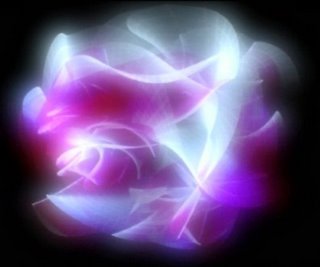Extra Spatial Dimensions

______________________________________________________
Physicists at the University of Wisconsin-Madison have devised an approach that may help unlock the hidden shapes of alternate dimensions of the universe.
A new study demonstrates that the shapes of extra dimensions can be "seen" by deciphering their influence on cosmic energy released by the violent birth of the universe 13 billion years ago. The method, published 02/02/07 in Physical Review Letters, provides evidence that physicists can use experimental data to discern the nature of these elusive dimensions.
String theory, proposes that everything in the universe is made of tiny, vibrating strings of energy, to encompass the physical principles of all objects from immense galaxies to subatomic particles. Though currently the front-runner to explain the framework of the cosmos, the theory remains, to date, untested.
The mathematics of string theory suggests that the world we know is not complete. In addition to our four familiar dimensions (three-dimensional space and time) string theory predicts the existence of six extra spatial "hidden" dimensions curled in tiny geometric shapes at every single point in our universe.
Maybe you can't picture a 10-dimensional world. Our minds are accustomed to only three spatial dimensions and lack a frame of reference for the other six, says UW-Madison physicist Gary Shiu, who led the new study. Though scientists use computers to visualize what these six-dimensional geometries could look like (see image), no one really knows for sure what shape they take.

A computer-generated rendering of a possible six-dimensional geometry similar to those studied by UW-Madison physicist Gary Shiu. (Image: courtesy Andrew J. Hanson, Indiana University)
According to string theory mathematics, the extra dimensions could adopt any of tens of thousands of possible shapes, each shape theoretically corresponding to its own universe with its own set of physical laws. For our universe, Nature picked one.
The many-dimensional shapes are far too small to see or measure through any usual means of observation, which makes testing this crucial aspect of string theory very difficult.
Just as a shadow can give an idea of the shape of an object, the pattern of cosmic energy in the sky can give an indication of the shape of the other six dimensions present, Shiu explains.
To learn how to read telltale signs of the six-dimensional geometry from the cosmic map, they worked backward. Starting with two different types of mathematically simple geometries, called warped throats, they calculated the predicted energy map that would be seen in the universe described by each shape. When they compared the two maps, they found small but significant differences between them.
The results show that specific patterns of cosmic energy can hold clues to the geometry of the six-dimensional shape.
Story adapted from a news release by University of Wisconsin-Madison
more Physicists Find Way To 'See' Extra Dimensions from Science Daily
______________________________________________________
Calabi Yau from WMAP by Lubos Motl
Symmetry in psychological action by Plato
______________________________________________________
______________________________________________________
Labels: Dimensions, Strings, Theoretical Physics







